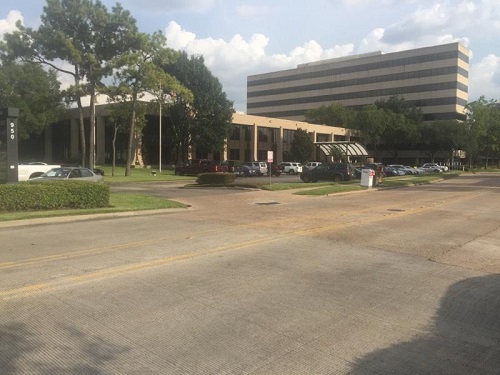Introduction
In the womb, the fetus is connected to the mother through the umbilical cord. By way of a small aperture present between the muscles of the abdomen in the babies, their cord passes. Soon after birth in the majority of the cases, this aperture closes. When these layers of the abdominal muscles are not able to join completely and the tissues or intestines escape from the abdominal cavity through a weak area in the muscles surrounding the belly button, an umbilical hernia occurs. An umbilical hernia is said to be the second most frequently present type of hernia in adults after inguinal hernia (2). In adults, almost six to fourteen percent of abdominal wall hernias consist of umbilical hernias (3,4).
Pathology
Anatomically, when the access of involuted umbilical vessels becomes potentially weak, especially the umbilical vein or the umbilical fascia becomes weak, an umbilical hernia develops. Therefore, the covering of the umbilical hernia contains subcutaneous tissues, skin, weakened umbilical fascia and peritoneum. Basically, all these different layers are present in the hernia fused with each other (5).
Umbilical hernia can occur in people having chronic distention of the wall of the abdomen accompanied by increased intra-abdominal pressure such as in pregnant women, or in patients undergoing peritoneal dialysis or with ascites. Furthermore, another major factor responsible for the development of umbilical hernia is the extension of muscle fibers in the abdomen or the connective tissue weakness (7). In cirrhotic patients, there is an increase in the pressure of the abdomen due to ascites, connective tissue weakness, and umbilical veins dilation because of the poor status of nutrition. This results in umbilical hernia in twenty percent of the patients (8).
Omentum, small intestine, and preperitoneal fat tissues may be present in the umbilical hernia or a combination of them (9). Rarely, involvement of transverse colon is present (10). The herniated sac is usually larger in sized while the neck of hernia is narrow. Hence, the risk of strangulation and incarceration are more (9).
Features
An umbilical hernia appears like a lump near the umbilicus. Upon going to bathroom, or coughing, the lump may become more prominent. Upon relaxing or lying down, the size of lump may shrink or the lump may disappear completely (11). The symptoms vary among individuals. Irrespective of the hernia’s size, the blood supply to the protrusion can be cut off if the abdominal wall tightens around it resulting in pain. The pain can be mild to severe. A doctor should be immediately consulted if the lump becomes too painful, becomes swollen and discolored and accompanied with vomiting. The size of the lump does not decrease when reducing pressure or upon lying down (12).
Diagnosis
Diagnosis is based on the physical examination. The entire area of the abdomen should be examined carefully to determine the size and the content of the hernia. Imaging modalities such as CT scan can be used to evaluate complicated situations when the clinical diagnosis becomes difficult, especially in obese patients (13).
Treatment
An umbilical hernia surgery involves making cuts at the abdomen and pushing the obtruding tissues back into the abdominal cavity. Either an open or a robotic surgery can be performed.
The surgeon in many cases stitches the abdominal wall muscles to close the aperture. In some cases, special mesh is used for reinforcement of the area and to prevent relapse.
Sources
- Muysoms FE, Miserez M, Berrevoet F, Campanelli G, Champault GG, Chelala E, et al. Classification of primary and incisional abdominal wall hernias. Hernia J Hernias Abdom Wall Surg. 2009 Aug;13(4):407–14.
- Dabbas N, Adams K, Pearson K, Royle G. Frequency of abdominal wall hernias: is classical teaching out of date? JRSM Short Rep. 2011 Jan 19;2(1):5.
- Shankar DA, Itani KMF, O’Brien WJ, Sanchez VM. Factors Associated With Long-term Outcomes of Umbilical Hernia Repair. JAMA Surg. 2017 May 1;152(5):461–6.
- Venclauskas L, Jokubauskas M, Zilinskas J, Zviniene K, Kiudelis M. Long-term follow-up results of umbilical hernia repair. Wideochirurgia Inne Tech Maloinwazyjne Videosurgery Miniinvasive Tech. 2017 Dec;12(4):350–6.
- Moschcowitz AV. THE PATHOGENESIS OF UMBILICAL HERNIA. Ann Surg. 1915 May;61(5):570–81.
- Fathi AH, Soltanian H, Saber AA. Surgical anatomy and morphologic variations of umbilical structures. Am Surg. 2012 May;78(5):540–4.
- Celdrán A, Bazire P, Garcia-Ureña MA, Marijuán JL. H-hernioplasty: a tension-free repair for umbilical hernia. Br J Surg. 1995 Mar;82(3):371–2.
- Belghiti J, Durand F. Abdominal wall hernias in the setting of cirrhosis. Semin Liver Dis. 1997;17(3):219–26.
- Kulaçoğlu H. Current options in umbilical hernia repair in adult patients. Ulus Cerrahi Derg. 2015;31(3):157–61.
- Forrest JV, Stanley RJ. Transverse colon in adult umbilical hernia. AJR Am J Roentgenol. 1978 Jan;130(1):57–9.
- Jackson OJ, Moglen LH. Umbilical hernia. A retrospective study. Calif Med. 1970 Oct;113(4):8–11.
- Yang XF, Liu JL. Acute incarcerated external abdominal hernia. Ann Transl Med. 2014 Nov;2(11):110.
- Lassandro F, Iasiello F, Pizza NL, Valente T, Stefano MLM di S, Grassi R, et al. Abdominal hernias: Radiological features. World J Gastrointest Endosc. 2011 Jun 16;3(6):110–7.
- Troullioud Lucas AG, Jaafar S, Mendez MD. Pediatric Umbilical Hernia. In: StatPearls [Internet]. Treasure Island (FL): StatPearls Publishing; 2022 [cited 2022 Jul 15]. Available from: http://www.ncbi.nlm.nih.gov/books/NBK459294/
- Coste AH, Jaafar S, Parmely JD. Umbilical Hernia. In: StatPearls [Internet]. Treasure Island (FL): StatPearls Publishing; 2022 [cited 2022 Jul 15]. Available from: http://www.ncbi.nlm.nih.gov/books/NBK459312/


